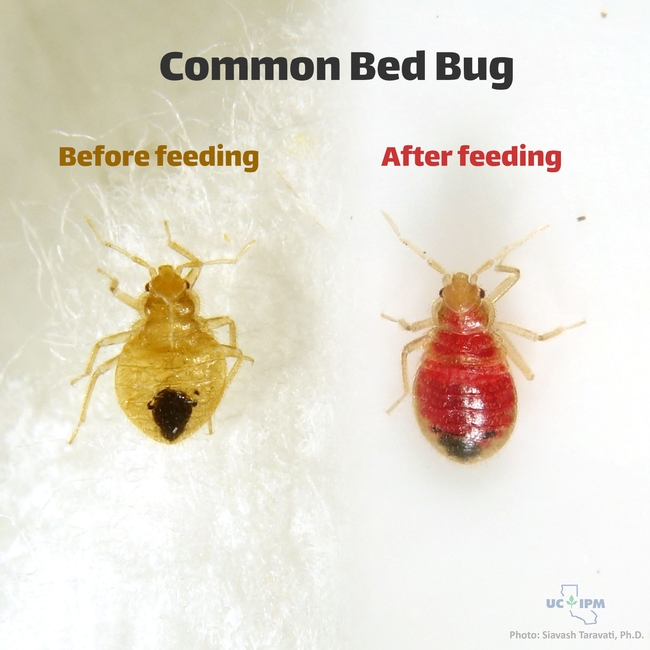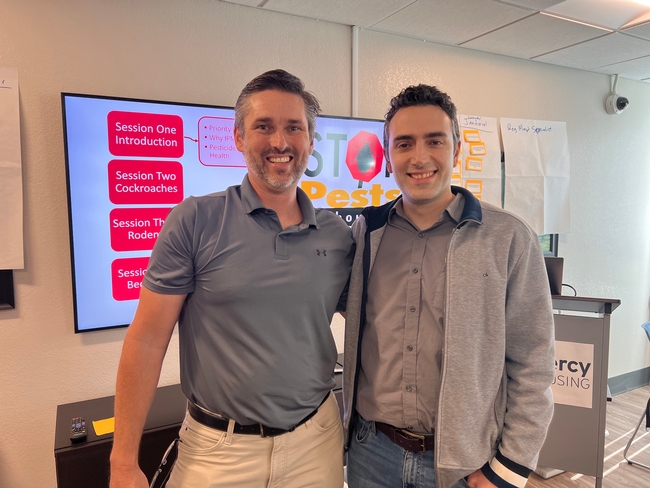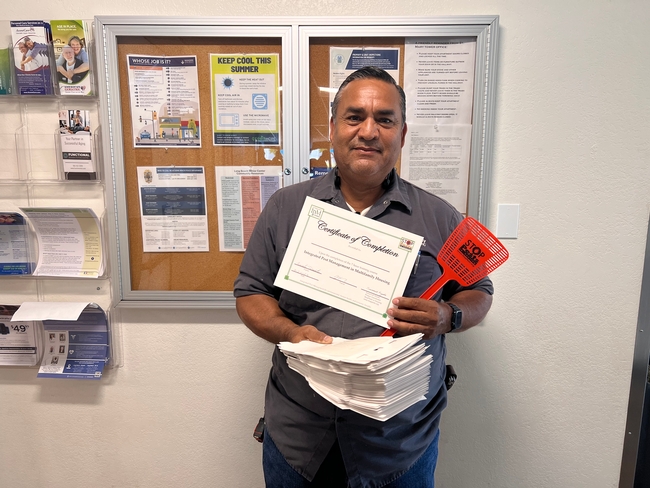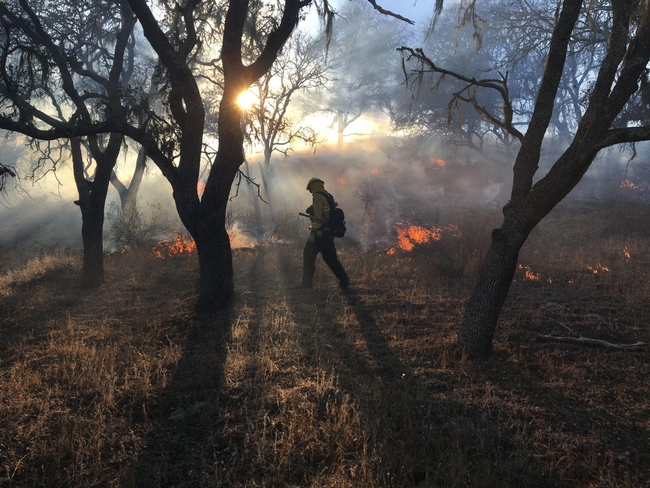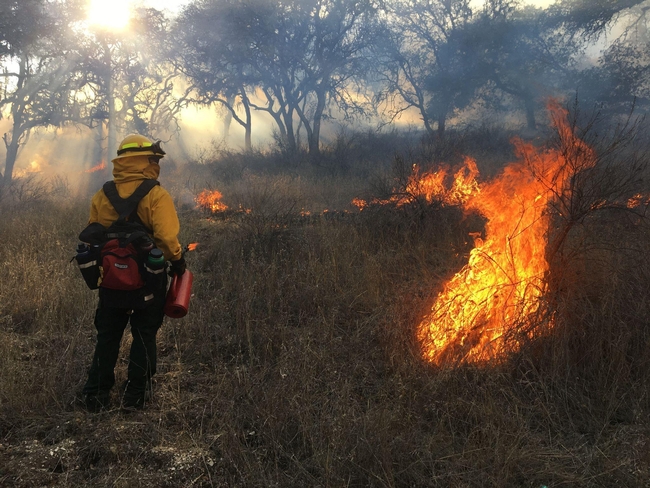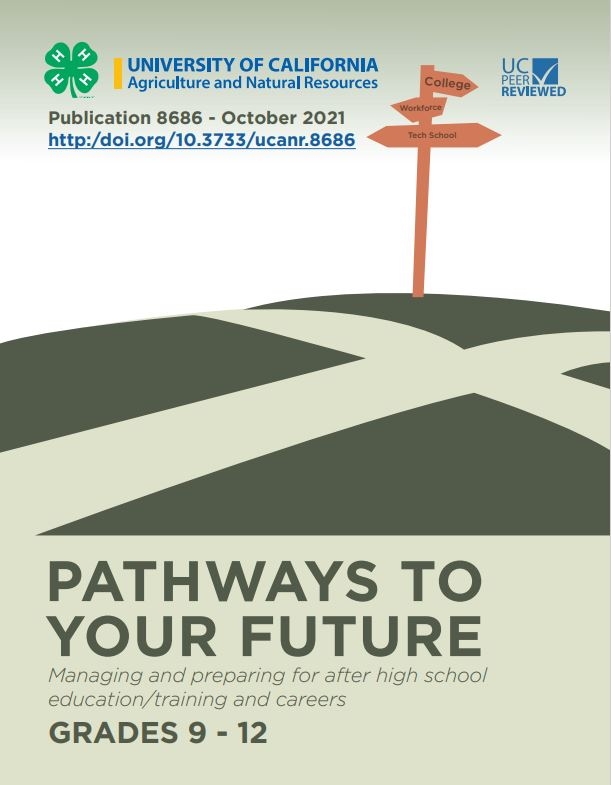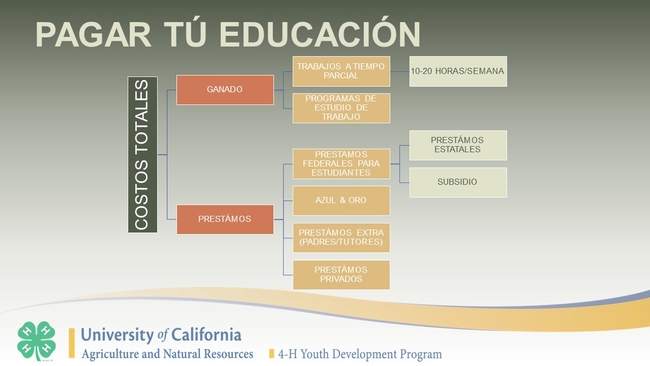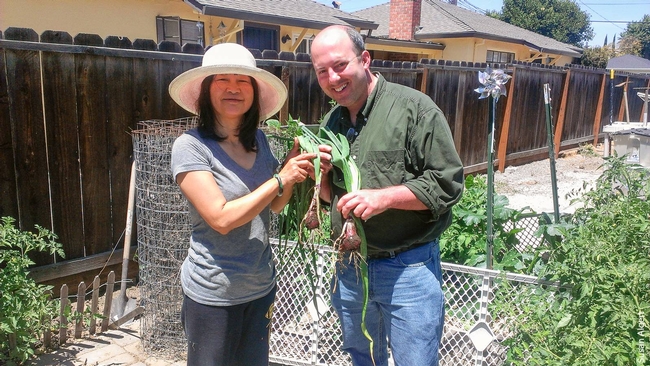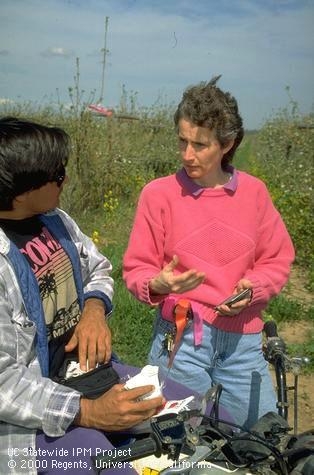Posts Tagged: training
UCCE offers water measurement training Sept. 13 in Salinas
California water-rights holders are required by state law to measure and report the water they divert from surface streams. For people who wish to take the water measurements themselves, the University of California Cooperative Extension is offering in-person training to receive certification on Sept. 13 in Salinas.
At the workshop, participants can expect to
- clarify reporting requirements for ranches.
- understand what meters are appropriate for different situations.
- learn how to determine measurement equipment accuracy.
- develop an understanding of measurement weirs.
- learn how to calculate and report volume from flow data.
The training is scheduled for 1 to 5 p.m. on Sept. 13 in the UC Cooperative Extension Conference Room at 1432 Abbott Street in Salinas.
“We are limiting the number participants for the water measurement training to 30 people per session,” said Larry Forero, emeritus UC Cooperative Extension livestock and natural resources advisor. “If you need this training, please register soon.”
Pre-registration is required and the fee is $30. To register, visit https://surveys.ucanr.edu/survey.cfm?surveynumber=43495. If you have questions, email Forero at lcforero@ucanr.edu or Sara Jaimes at sbjaimes@ucanr.edu, or call (530) 224-4900.
UC Cooperative Extension advisor helps property managers prevent pests in the home
Living with pests, or “unwanted guests” as some put it, can take a physical, mental and economic toll. For people living in multi-family unit housing, like an apartment complex where everyone lives under one roof, a single infestation of insects or rodents can expose all residents.
Using integrated pest management, or IPM, residents and property managers can detect infestations early and control severe ones and protect people. IPM programs can also save money. IPM saved a 75-unit complex in Contra Costa County $11,121 annually. Similarly, in Santa Clara County, a 59-unit complex saved $1,321 on pest control annually after implementing a proactive IPM program.
This summer, regional directors, property managers, residential service coordinators, maintenance managers and groundskeepers of Mercy Housing – a nonprofit organization that provides affordable, low-income housing – gathered in Long Beach to learn about in-home IPM. The session was led by Siavash Taravati, University of California Cooperative Extension area IPM advisor for Los Angeles, Orange, Riverside and San Bernardino Counties, and
Josh Shoemaker, an entomologist and private consultant.
Taravati and Shoemaker collaborated with StopPests in Housing, a national program out of Cornell University's Northeastern IPM Center, which seeks to improve pest control in affordable housing and teach management practices for cockroaches, bed bugs and rodents within and around the home.
During their presentation, Taravati introduced participants to the IPM principles and emphasized the importance of monitoring pests.
“IPM is all about making informed decisions which requires knowing the latest status of an infestation,” explained Taravati. “That's where monitoring comes into play. It can help us to identify the exact species we are dealing with as well as telling us if an infestation is growing or shrinking.”
“Monitoring is foundational,” agreed Shoemaker. “If a program does not include monitoring, it's not an IPM program.”
According to Shoemaker, the benefit of partnering with UC IPM is their sharp focus on general IPM, which includes monitoring. “It's real IPM, that prioritizes the well-being of the public,” said Shoemaker, who's eager to continue working with Cooperative Extension and Taravati to ensure that children are growing up in safe environments.
Pest control treatments commonly take place following a serious infestation or several complaints, but IPM promotes constant monitoring to prevent heavy infestations from ever happening. It's a proactive approach rather than a reactive or emergency-response. For many attendees, the training revealed a need to engage with pest management operators more closely.
Training prompts changes that improve safety for residents
Pest management operators commonly use pesticide sprays to control pests. Besides inconveniencing residents, forcing them to do extensive preparations and evacuate their unit until it's safe to return, sprays increase exposure risk to pesticides since the aerosols can linger and land on surfaces.
Instead, Taravati and Shoemaker recommend using gel baits, which are much safer to apply and can target a specific area of a home, including crevices, instead of along all the walls.
“Now that I'm more informed, I'll be speaking to my contractor to discuss how we can switch their approach from a bug spray to a gel,” said Leonardo Pinuelas, a maintenance manager for Mercy Housing.
Pinuelas is not the only one wanting to modify their program, however. According to feedback from staff members at the Housing Authority of the City of Los Angeles who experienced the same training earlier this year, they prompted their team to amend their pest extermination to include dusting, or applying insecticidal dusts, against roaches, and to review and update their existing IPM plan and practices where appropriate.
Cindy Wise, area director of operations for Mercy Housing, said that in her 35 years, this was one of the few trainings that engaged her staff so actively. “I couldn't help but text my regional vice president to say that our managers were actively participating and asking questions. That doesn't happen often, not even in our own meetings,” said Wise.
Many of the attendees, with their new understanding of how cockroaches move through a structure, shared that they are eager to return to work to meet with residents and support them.
“If you've got roaches in one unit, you've got them in the entire building,” Wise said.
Shoemaker recalls the words of Judy Black, senior technical entomologist for Orkin, and Dini Miller, entomologist at Virginia Tech, who urge the importance of inspections and documentation as IPM best practices.
Although reporting pests in the home can make one feel embarrassed, Wise said she is more interested in making residents feel empowered to not only report signs of infestation to the staff, but to their neighbors.
Training residents is certainly beneficial, but as experts such as Black and Miller have pointed out, housing managers must do their part, instead of scapegoating tenants for their cleaning habits.
StopPests provides free IPM training and technical assistance to Housing and Urban Development assisted properties. If you are interested in the training provided by Taravati and Shoemaker, in collaboration with StopPests, visit StopPests.org for more information.
Public invited to observe prescribed fire training June 4-9
The Monterey Bay area will host part of the first California Central Coast Prescribed Fire Training Exchange, or Cal-TREX.
Fire practitioners from across the state, greater North America and international locations (Spain, Honduras, Costa Rica, Ecuador) are gathering for a Prescribed Fire Training Exchange on June 3-10.
The training is hosted by the Central Coast Prescribed Burn Association, which empowers the public to build a culture of “good fire” and helps private landowners conduct prescribed burns in Monterey, San Benito and Santa Cruz counties.
Prescribed burns will be open for the public to observe on various days throughout the training, most likely June 4-9, depending on the weather. Please see the CCPBA webpage for updates on upcoming burns: http://calpba.org/centralcoastpba.
Prescribed Fire Training Exchanges (TREX) first came to Northern California in 2013, and have made a dynamic, positive cultural shift concerning prescribed fire, within both regional fire services and the general public. These “good fire” TREX events have drawn significant attention, especially in the context of more severe wildfire seasons.
After months of cross-organizational cooperative planning, participants in the weeklong training will be burning a mix of grassland, oak woodland and shrub vegetation types, and make a lasting, positive change concerning “good fire” on the Central Coast.
The TREX will provide experiential training opportunities to advance regional prescribed fire capacity, while also enhancing research to better understand the ecological response of wild plant and animal species following fire.
At this TREX event, participants will learn how to safely conduct prescribed burns in various vegetation types across three counties. Along with multiple prescribed burns, the weeklong program will include lectures and seminars on local fire ecology of plant and animal species, tribal burning practices and burn planning led by multiple burn bosses and other experts.
Burn locations may include the Nyland property (owned by Trust for Public Land and San Benito Agricultural Land Trust) near San Juan Bautista, the Santa Lucia Conservancy near Carmel Valley and the Kechun Village (owned by the Nason family) in Arroyo Seco.
Be advised, while the CCTREX works closely with the Monterey Bay Air Resources District (MBARD) to assure good smoke dispersal, smoke may be seen and present in these areas during and after a burn. Please see the CCPBA webpage for updates on upcoming burns: http://calpba.org/centralcoastpba.
BurnBot, a new technology featuring a mobile burn chamber, remote-controlled mastication and fire drone systems, will be used for the prescribed burn on June 4. To observe the Nyland burn on June 4, register at https://bit.ly/CCPBApublicRxfire. Details including time and directions will be emailed to registered participants.
Participants and partners include members of the Amah Mutsun Tribal Band and the Esselen Tribe of Monterey County, University of California Agriculture and Natural Resources, Resource Conservation District of Monterey County, CAL FIRE, local land trusts, scientists, ranchers, students, researchers, land managers and others. The CCPBA is funded by two CAL FIRE wildfire prevention grants.
For more information, contact Jamie Tuitele-Lewis, fire fuel mitigation program and forest health coordinator, at jtlewis@rcdmonterey.org or Barb Satink Wolfson, UC Cooperative Extension area fire advisor, at bsatinkwolfson@ucanr.edu.
New publication helps youth evaluate post-high school ‘pathways’
Free downloadable curriculum recognizes diverse family circumstances
Not all young people are on an expressway to a four-year college, and a new publication from University of California Agriculture and Natural Resources acknowledges their many circumstances and possibilities. The “Pathways to Your Future” curriculum invites high school-aged youth – and their families – to map their unique situations and passions before embarking on their own road.
Whereas similar guides might convey advice on a one-way street, this free download outlines a “hands-on” experience – in school settings or out-of-school programs – to help young people steer toward their best post-high-school education, training and career options.
“We wanted to make a youth-centered publication,” said co-author Claudia Diaz Carrasco, UC Cooperative Extension 4-H youth development advisor in Riverside and San Bernardino counties. “A lot of the content out there is based on delivering content to kids – just like information on college and careers; with ‘Pathways to Your Future', it's actually a skill-building curriculum so that youth are doing research and having critical discussions and making comparisons.”
In a pilot program that engaged 228 high schoolers across California (primarily 9th graders recruited from local 4-H programs), many participants said they appreciated that the curriculum presented a variety of pathways, including vocational education, non-degree certificate programs, community college, on-the-job training or entering the workforce – as well as four-year institutions of higher education.
“They have been liking that it doesn't start with ‘pick a college and get there,'” Diaz Carrasco said. “But really it's a self-reflection approach, where they start going back to what they're passionate about and what they think they're good at – and how much money they want to make in the future – and really just having that opportunity to know themselves before jumping into college or a career.”
To help them attain that clear-eyed perspective, the modules in the curriculum also debunk myths about the college experience and incorporate budgeting activities.
“This program gives youth the opportunity to constantly reflect on their learning as they get more data,” said another publication co-author, Lynn Schmitt-McQuitty, UC ANR's statewide 4-H director. “In the beginning, youth may have a very rigid or glamorized view of their future; the ‘Pathways' program grounds things and brings reality into the picture.”
Parents of the pilot-program participants – who predominantly identify as Latino – were also thankful for opportunities to engage in “real talk” with other parents about the wide array of options. Acknowledging the diversity of families across California, “Pathways to Your Future” also includes several sections in Spanish to make essential information more accessible.
“The parents need as much – or more – education on the processes, opportunities and expectations to support post-high school life,” Schmitt-McQuitty explained.
In addition to integrating families into discussions about their future, the curriculum also provides spaces for the high schoolers to participate in panel discussions with their slightly older peers, who recently went through their own decision-making journeys.
“The youth really appreciate seeing someone like themselves talking about what they went through, how they overcame obstacles,” said Diaz Carrasco. “They feel really inspired that there is a pathway for themselves.”
For assistance and support in bringing the “Pathways” curriculum to your community, contact your county's Cooperative Extension office, reach out to the local 4-H program, or email Claudia Diaz Carrasco at cpdiaz@ucanr.edu.
The other authors of the publication are Shannon Horrillo (College of Agriculture, Biotechnology, and Natural Resources, University of Nevada, Reno Extension), Darlene McIntyre and Nathaniel Caeton (UC ANR), and Martin Smith (University of California, Davis).
Beginning farmers invited to specialty crop training on Bay Area’s urban edge
Aspiring farmers are invited to apply for Urban Edge Sustainable Farming, a program that will expand the range of opportunities for beginning farmers in California by leveraging 550 acres of prime, protected East Bay farmland for training, farm business incubation and long-term leasing.
As baby boomer farmers retire, a new generation of farmers is needed to carry on the work.
“Small and mid-size farmers are vital to the strength of our local communities and the security of our food supply,” said Alli Cecchini, First Generation Farmers executive director. “If there are no farmers to keep fertile land in production, it will be sold to developers and we'll never get it back.”
First Generation Farmers received a grant from the USDA National Institute of Food and Agriculture Beginning Farmer and Rancher Development Program to launch Urban Edge Sustainable Farming as a formal training and incubator program that combines classroom-style instruction with hands-on field training. The program is designed to provide beginning specialty crop farmers with the core agricultural production skills, business knowledge and the confidence they need to establish viable farm businesses.
To provide science-based training, the women-led nonprofit farm located in Brentwood, 55 miles northeast of San Francisco, is partnering with UC Cooperative Extension in Contra Costa County.
“It's a very nice mix of practical application and applied science,” said Janet Caprile, who recently retired after 30-plus years as a UC Cooperative Extension farm advisor. “It's very hands-on approach to education – more like an apprenticeship program. I've signed on to present.”
Urban Edge Sustainable Farming is a full-time, nine-month residency. In 2018, the course will run from Feb. 5 through Nov. 5, with a one-week break in early July. Beginning farmers will live on site in dorm-style housing for an immersive, cooperative learning experience. The curriculum is designed and delivered by First Generation Farmers and professional instructors from the National Center for Appropriate Technology and UC Cooperative Extension. Participants will also learn from working alongside the Cecchini family — successful, fourth-generation farmers who are bridging agricultural tradition with adaptation to 21st century practices and market demands.
The training covers a wide range of topics, including composting, organic practices, greenhouse management, pest and disease management, healthy soil management, cover crops and crop rotation, biodynamic farming, crop planning, food safety and handling, marketing strategies, financial record-keeping and business planning. First Generation Farmers will introduce participants to regional direct and wholesale markets.
“What UESF [Urban Edge Sustainable Farming] offers beginning farmers is unique in California: an opportunity to farm on historic farmland, in close connection with a traditional farm family, in a changing farming community on the edge of a major and expanding urban market,” said Poppy Davis, independent ag business and policy consultant and research professor at the University of Arkansas School of Law.
Urban Edge Sustainable Farming is open to all applicants, but the program prioritizes admission for beginning farmers with limited resources, military veterans, and those from socially disadvantaged backgrounds, including women, members of the LGBTQ community, people of color, immigrants and refugees. Because a diverse population of farmers makes for a stronger and more resilient farming community, the program aims to support farmers who often experience significant systemic barriers to starting their enterprise.
Up to 15 beginning farmers can be accommodated in the first cohort and applications will be accepted until the cohort is full. Applicants must be 18 years old and previous farm experience is not required. Tuition for the program is $4,000 and includes food and lodging. For more information and to apply, visit https://firstgenerationfarmers.org/uesf.


